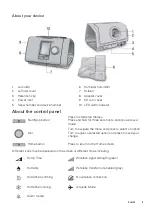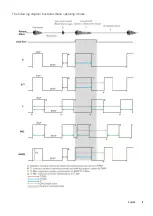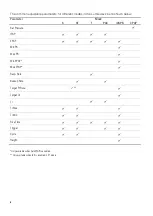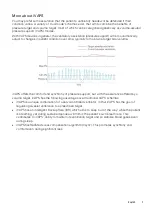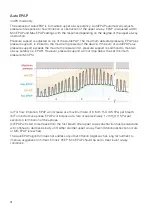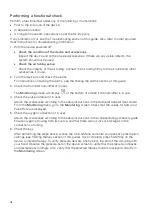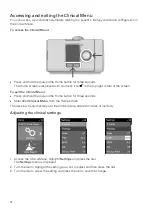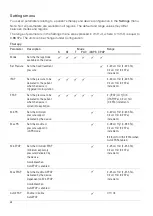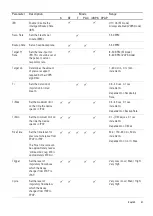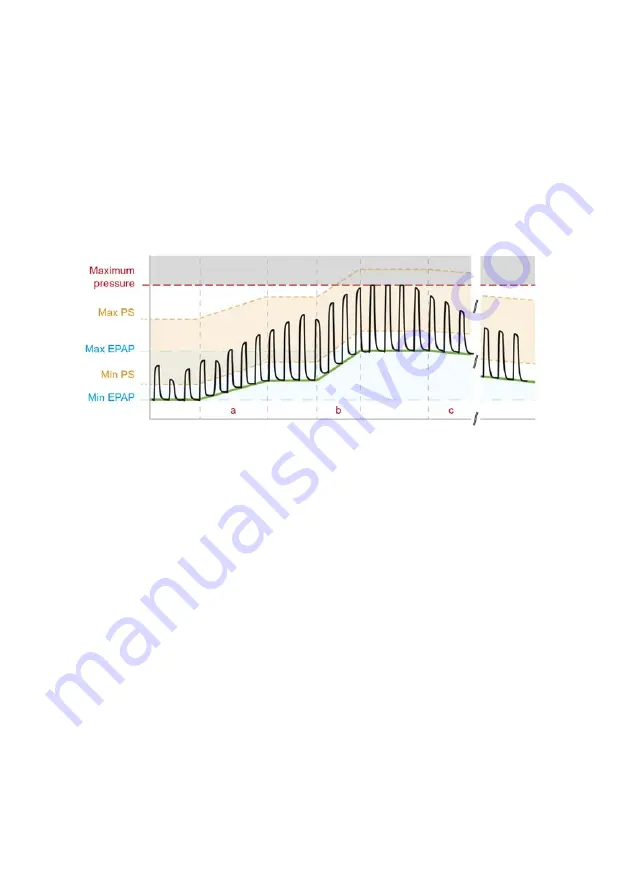
10
AutoEPAP
iVAPS mode only
The purpose of AutoEPAP is to maintain upper airway patency. AutoEPAP automatically adjusts
pressure in response to flow limitation or obstruction of the upper airway. EPAP is adjusted within
Min EPAP and Max EPAP settings with the response depending on the degree of the upper airway
obstruction.
Pressure support is adjusted on top of the AutoEPAP. The maximum delivered pressure, EPAP plus
pressure support, is limited to the maximum pressure of the device. If the sum of AutoEPAP plus
pressure support exceeds the maximum pressure limit, pressure support is sacrificed to maintain
airway patency (ie, EPAP). However, pressure support will not drop below the set minimum
pressure (Min PS).
(a) For flow limitation, EPAP will increase at a maximum rate of 0.5 cm H
2
O (0.5 hPa) per breath.
(b) For obstructive apnoea, EPAP will increase at a rate of approximately 1 cm H
2
O (1 hPa) per
second on termination of the apnoea.
(c) EPAP will start to decrease from the first breath after upper airway obstruction has resolved and
will continue to decrease slowly until either another upper airway flow limitation/obstruction occurs
or Min EPAP is reached.
The AutoEPAP algorithm does not address any other titration target such as lung recruitment to
improve oxygenation or offset intrinsic PEEP. Min EPAP should be set to treat lower airway
conditions.







